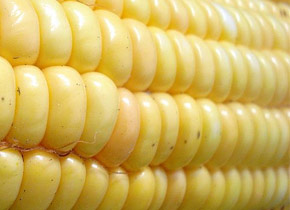

A material developed by researchers from the United States and Brazil could be used in place of bisphenol A in the epoxy resins used in rigid plastics such as those used in computer boards, packaging and coatings (photo:Wikimedia)
A material developed by researchers from the United States and Brazil could be used in place of bisphenol A in the epoxy resins used in rigid plastics such as those used in computer boards, packaging and coatings.
A material developed by researchers from the United States and Brazil could be used in place of bisphenol A in the epoxy resins used in rigid plastics such as those used in computer boards, packaging and coatings.

A material developed by researchers from the United States and Brazil could be used in place of bisphenol A in the epoxy resins used in rigid plastics such as those used in computer boards, packaging and coatings (photo:Wikimedia)
By Elton Alisson
Agência FAPESP – A new polymer produced using corn derivatives that was developed by a Brazilian researcher together with scientists from the United States can be used in place of bisphenol A in epoxy resins. Bisphenol A is also a component of polycarbonates that are used to produce plastic products such as bottles, including baby bottles, and the use of this compound is being banned in many countries, including Brazil.
Professor Luiz Henrique Catalani from the Chemistry Institute (IQ) at the Universidade de São Paulo (USP), along with the study’s three other authors, received the 2011 Thomas Alva Edison Award for their discovery. This award was given by the New Jersey Council of Research and Development on November 10 to 40 inventors and 13 companies.
During his post-doctoral work at the New Jersey Institute of Technology (NJIT) in 2004, Catalani joined the group of scientists led by Michael Jaffe. At the time, these researchers were dedicated to a project funded by the Iowa Corn Promotion Board (ICPB) that focused on adding value to corn products.
One of the possibilities found was to develop products based on a compound derived from corn glucose, called isosorbide. Based on this substance, the scientists invented a new polymer that can be used in epoxy resins, which are utilized on a large scale in the production of rigid plastics such as computer boards, packaging and coatings.
“This new polymer is important not just because it is produced from biomass—therefore an alternative to petroleum products—but also as a substitute for bisphenol A in epoxy resins” he told Agência FAPESP.
According to the researcher, bisphenol A, which is being illegalized in many countries due to its estrogen (hormone) mimicry effect, is used in many products as a plastifying agent. In epoxy resins, this compound is the base (monomer) of the polymer.
“We are proposing a new molecular structure that corresponds to bisphenol A to substitute it in epoxy resins, which is the isosorbide,” he said. The new polymer has been patented by Catalani and the other three researchers who discovered it: Anthony East, Michael Jaffe and Yi Zang, all from NJIT.
Already produced on a commercial scale from corn, isosorbide can also be produced from other raw materials, such as sugarcane. “Sugarcane would certainly be an alternative source for this product, because it has very high levels of glucose,” he explained.
This study performed together with the NJIT team is one of the studies developed by Catalani at the USP Chemistry Institute that focus on the production of biodegradable and bioabsorbable polyesters and on the applications of biomaterials in biomedical engineering.
The researcher intends to use the new isosorbide-derived polymer to develop a support for the growth of many types of cells, representing the first step in artificial tissue production (bone tissue or eardrum reconstitution).
In a FAPESP-funded project, Catalani and the IQ-USP team developed structures called hydrogels.
Formed by polymer chains, these structures absorb water in large quantities and can act as “intelligent bandages,” allowing the controlled release of medications such as antibiotics or antifungals.
“We already have three Brazilian patents in the hydrogel area. But we don’t have a final product because we still don’t have a company interested in producing it,” he said.
Republish
The Agency FAPESP licenses news via Creative Commons (CC-BY-NC-ND) so that they can be republished free of charge and in a simple way by other digital or printed vehicles. Agência FAPESP must be credited as the source of the content being republished and the name of the reporter (if any) must be attributed. Using the HMTL button below allows compliance with these rules, detailed in Digital Republishing Policy FAPESP.





